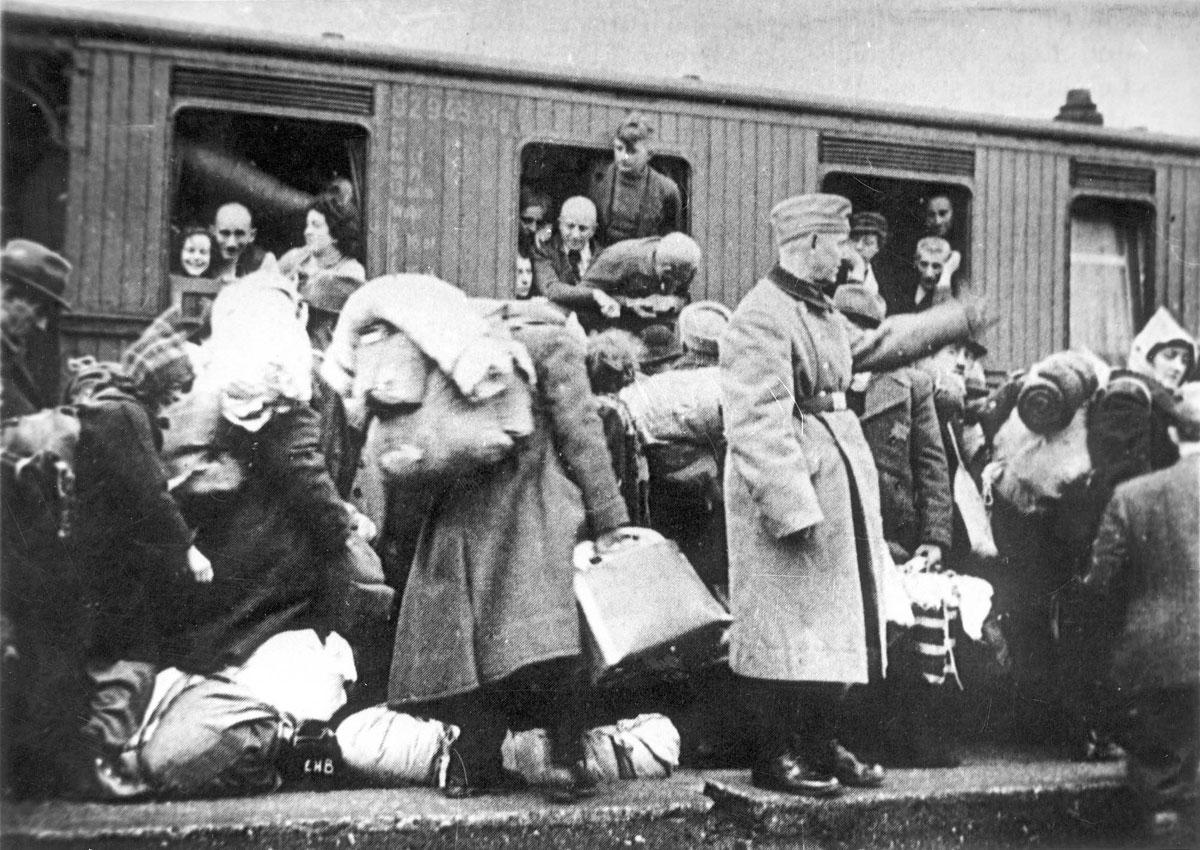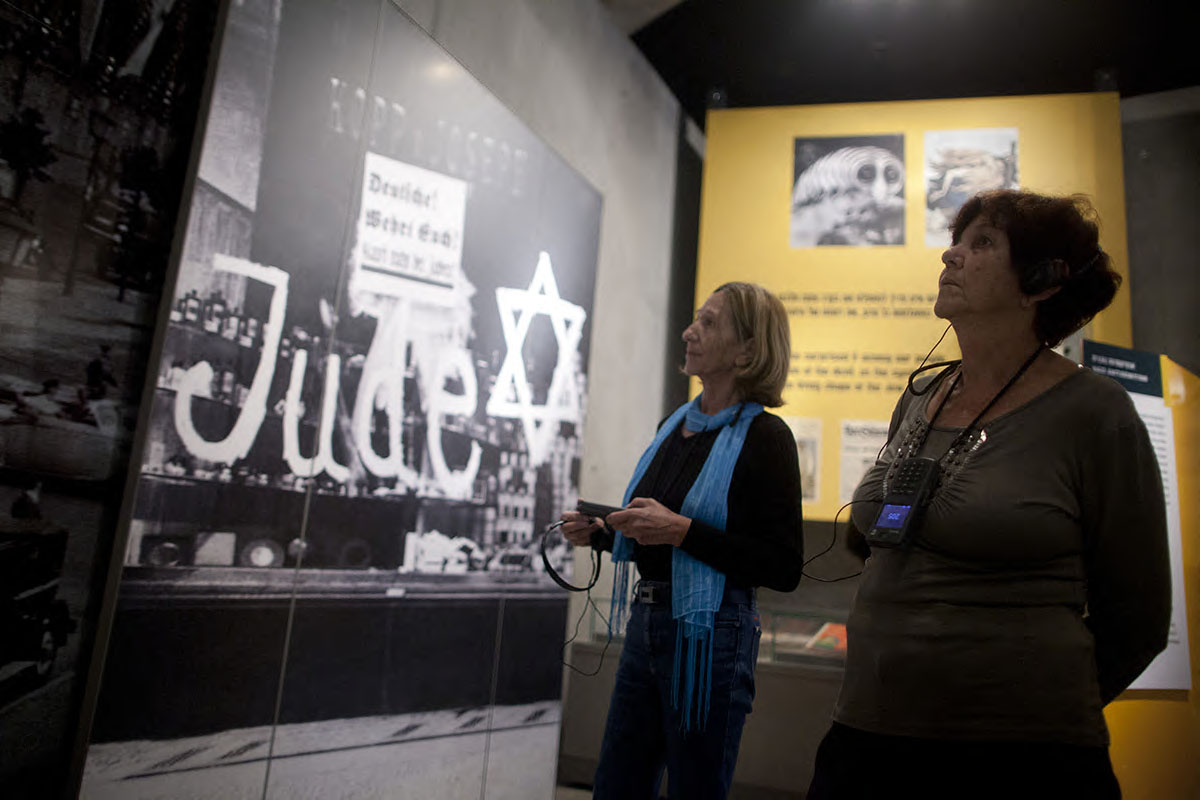Methodological Aspects
Since 2007, the International Institute for Holocaust Research at Yad Vashem has been studying the transports as an extensive phenomenon that transcended individual states. Hence, the research project examines the transports as a historical phenomenon that is significant in its own right, and not as a mere technical stage during which Jews were moved from one place to another. Various agencies made considerable logistical efforts to seize and deport every single Jew in their respective spheres of influence, in order to make German-occupied Europe “free of Jews” (judenfrei). Indeed, the transports played an important role in implementing the grim idea of the “Final Solution to the Jewish Question” and enabling it to spread its tentacles to the very edges of the territories controlled by the Third Reich.
In the context of this project, the term “transport” designates the forced and organized deportation of Jews from one place to another by various means of transportation — train, truck, boat, horse-drawn wagon — and on foot. The transport was the core of the deportation process, moving Jews from their homes to remote locations, whether beyond the borders of the countries in which they lived or to ghettos, camps, and various extermination sites inside their home country. This process included the concentration of the Jews at specific sites where they often had to undergo a “selection,” their transfer to pick-up points, the actual departure, the forced journey, and the arrival at the destination. While the project database does usually not include detailed descriptions of transports to forced labor camps, we are carrying out in-depth research on the waterwork’ camps run by the German Water Management Inspection (Wasserwirtschaftsinspektion) in the Lublin District, where the death rate among the inmates was high, because of deliberate Nazi policy.
Most transports consisted of about a thousand deportees, but there were also much smaller transports from villages; these were often connecting transports to concentration points, and thence to death camps. The “Transports to Extinction” research project aims to include all transports, and not only the larger ones.
The project is based on rigorous historical research, and it provides an overview of all aspects of the deportations, with an emphasis on three key elements: (a) the reconstruction of the deportations, with special focus on the transports; (b) the deportation apparatus, whose agents carried out the deportations; and (c) the identity of the victims, as well as that of the smaller and larger Jewish communities all over Europe on the eve of their destruction.
The project website is updated periodically. Currently, it provides information about transports from cities, towns, and villages in Austria, Belgium, Denmark, Czechoslovakia (the Protectorate of Bohemia and Moravia), France, Germany, Greece/Macedonia, Luxembourg, the Netherlands, and parts of Poland, to destinations in Eastern Europe between 1939 and 1945. The website yields in-depth information about the transports, along with ample documentation, as well as basic information about other transports to be researched in the future, mainly to forced labor sites. The project offers a comprehensive overview of the deportation process, as well as detailed information on specific transports and deportees. The database is intended for the use of researchers, victims' relatives who wish to find details on the fate of their family members, and all those who seek to expand their knowledge of the Holocaust.
The sources used by the project researchers include official German documents, the records of contemporary Jewish organizations, wartime and postwar personal accounts by deportees and other witnesses, visual images (e.g., contemporary photographs), and the various studies on deportations carried out since 1945. By collating documentation from different sources, we are able to piece together the story of this crucial element of the Holocaust. As the project focuses increasingly on deportations from Eastern Europe, the reconstruction of the historical events becomes more challenging, given the paucity of documentation and the inevitably shrinking number of survivors. The lack of sources makes it almost impossible to identify all the individual transports, and the exact numbers of deportees cannot be determined, either, because the transport lists have vanished (or were never compiled in the first place). Consequently, several transports organized in the wake of the dissolution of a Jewish community are described and catalogued together in our database as a “wave of transport.” Nevertheless, despite its incompleteness, the information we have assembled on these deportations provides crucial knowledge and insights, and contributes to our understanding of the overall Nazi deportation phenomenon.
Project Staff
Dr. Cornelia Shati-Geissler—Project Director
Dr. Chaim Moykopf—Researcher
Mr. Dmitry Kolotilenko—Researcher
Dr. Marta Marzanska-Mishani—Researcher
Dr. Maya Dover-Daffan—Researcher







